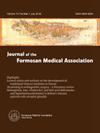The association between trajectory of serum cholesterol, statin dosage, and the risk of recurrent biliary stone diseases
IF 2.6
3区 医学
Q1 MEDICINE, GENERAL & INTERNAL
引用次数: 0
Abstract
Background
Statins may reduce the risk of recurrent gallstone disease by decreasing bile cholesterol saturation and pathogenicity. However, limited studies have investigated this issue. This study aimed to assess whether statin doses and serum cholesterol levels were associated with a decreased risk of recurrent biliary stone diseases after the first event index, with a follow-up time of 15 years.
Methods
Based on the Chang Gung Research Database (CGRD) between January 1, 2001, and December 31, 2020, we enrolled 68,384 patients with the International Classification of Diseases, Ninth and Tenth Revision codes of choledocholithiasis. After exclusions, 32,696 patients were divided into non-statin (<28 cDDD, cumulative defined daily doses) (n = 27,929) and statin (≥28 cDDD) (n = 4767) user groups for analysis. Serum cholesterol trajectories were estimated using group-based trajectory modeling (n = 8410).
Results
The statin users had higher Charlson Comorbidity Index (CCI) scores than the non-statin users. Time-dependent Cox regression analysis showed that statin use >365 cDDD was associated with a significantly lower risk of recurrent biliary stones (adjusted hazard ratio [aHR] = 0.28, 95% CI, 0.24–0.34; p < 00.0001), acute pancreatitis (aHR = 0.24, 95% CI, 0.17–0.32, p < 00.0001), and cholangitis (aHR = 0.28, 95% CI, 0.25–0.32, p < 00.0001). Cholecystectomy was also a protective factor for recurrent biliary stones (aHR = 0.41, 95% CI, 0.37–0.46; p < 00.0001). The higher trajectory serum cholesterol group (Group 3) had a lower risk trend for recurrent biliary stones (aHR = 0.79, p = 0.0700) and a lower risk of cholangitis (aHR = 0.79, p = 0.0071).
Conclusion
This study supports the potential benefits of statin use and the role of cholecystectomy in reducing the risk of recurrent biliary stone diseases.
血清胆固醇的变化轨迹、他汀类药物的用量与胆道结石病复发风险之间的关系。
背景:他汀类药物可降低胆汁中胆固醇的饱和度和致病性,从而降低胆石症复发的风险。然而,对这一问题的研究有限。本研究旨在评估他汀类药物剂量和血清胆固醇水平是否与首次事件指数后胆石症复发风险的降低有关,随访时间为 15 年:基于2001年1月1日至2020年12月31日期间的长庚研究数据库(CGRD),我们纳入了68384名国际疾病分类第九版和第十版代码为胆总管结石的患者。排除后,32,696 名患者被分为非他汀类药物使用者(结果:他汀类药物使用者的 Charloss 感染率较高,而非他汀类药物使用者的 Charloss 感染率较低:他汀类药物使用者的夏尔森合并症指数(CCI)评分高于非他汀类药物使用者。时间依赖性 Cox 回归分析显示,他汀类药物使用量大于 365 cDDD 与胆道结石复发风险显著降低相关(调整后危险比 [aHR] = 0.28,95% CI,0.24-0.34;P 结论:该研究支持他汀类药物对胆道结石的潜在益处:本研究支持使用他汀类药物的潜在益处以及胆囊切除术在降低胆道结石复发风险方面的作用。
本文章由计算机程序翻译,如有差异,请以英文原文为准。
求助全文
约1分钟内获得全文
求助全文
来源期刊
CiteScore
6.50
自引率
6.20%
发文量
381
审稿时长
57 days
期刊介绍:
Journal of the Formosan Medical Association (JFMA), published continuously since 1902, is an open access international general medical journal of the Formosan Medical Association based in Taipei, Taiwan. It is indexed in Current Contents/ Clinical Medicine, Medline, ciSearch, CAB Abstracts, Embase, SIIC Data Bases, Research Alert, BIOSIS, Biological Abstracts, Scopus and ScienceDirect.
As a general medical journal, research related to clinical practice and research in all fields of medicine and related disciplines are considered for publication. Article types considered include perspectives, reviews, original papers, case reports, brief communications, correspondence and letters to the editor.

 求助内容:
求助内容: 应助结果提醒方式:
应助结果提醒方式:


